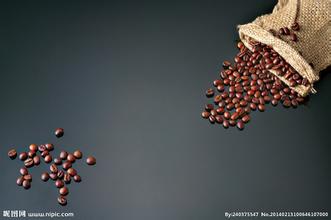Grinding scale treatment of Tarazhu Coffee Bean in Costa Rica
Grinding scale treatment of Tarazhu Coffee Bean in Costa Rica
Costa Rica has a deep coffee culture, superb coffee skills, and produces world-class high-quality coffee. Costa Rica is an excellent coffee producer, both in terms of its innate environmental advantages and its acquired efforts to produce quality coffee. Although Costa Rica ranks third from the bottom in terms of land area in Central America, its economic environment is better than that of half of the countries. Colombians say that it is coffee that has changed the country and enabled people to enjoy a rich environment. Coffee is indeed a great contribution to the country, and hardworking coffee people have created high-quality coffee. At present, the Tarazhu Cooperative has 26 member estates. Among them, Raminita Manor, which is one of the most famous coffee farms in Tarazu. La Minita produces about 1 million pounds of coffee beans a year, and after the entire estate produces coffee beans that are carefully selected to remove defects, only 15 per cent of the coffee beans can bear the mark of the Laminita estate, while the rest enter the coffee market. But the prices of these coffees entering the market are still higher than those of other beans produced in Central America. Raminita's strict management of all aspects of coffee production has established a world-class reputation and can be called a world-famous coffee farm.
The flavor of Costa Rica has always been steady, without the sharpness of Guatemala, it is quite mild and supple, sour, sweet and bitter chocolate, inclusive and well-balanced, is the classic flavor of gourmet coffee. The seven major coffee producing areas are as follows: Durieba Valley (northeast of the capital San Jose), Central Valley (northwest of San Jose), Western Valley (west of the capital), Sanhe District (east side of the capital), Blanca (southeast of the capital), Orosi (north of the capital), Tarazu (south of the capital). Among them, the Central Valley, Tarazhu and Sanhe producing areas are the most famous. In principle, the quality of coffee sloping towards the Pacific is better than that facing the Atlantic. In the 2007 Costa Rica Cup Test Competition, the champion farm Serobado was located in the Tarazu producing area south of San Jose, but the Central Valley also performed well, with two or four from the city of Naranhe, where Sanhe District seemed to be left out.
The strict management of Laminita Farm in Tarazhu production area has established a world-class reputation and is popular in European and American markets for most of the century. It can be called a world-famous coffee farm. Lamini Tower means "small gold mine". Before the Spanish colonization, the Indians used to dig gold in the present farm location, which can be described as a blessed land. Raminita produces about 1 million pounds of coffee beans a year, and after selection to remove defects (more than 70% eliminated), only 290000 pounds of high-end products are sold to the boutique market, which is not a false name. The coffee of Gai Manor is famous for its sour aromas of apple and citrus, rich milk and truffle, and delicate taste of silk, about 1200-1700 meters above sea level. In addition, Sanhe District is also a famous producing area. The Yilazhu volcano and rivers not far to the east of the capital form an excellent microclimate zone, but in recent years, the urban area has gradually extended to the suburbs, and agricultural land has been sold to developers, resulting in a sharp decline in coffee production in Sanhe area. the output is almost half of which is contracted by Starbucks, and it is not easy for the industry to buy. Aquez Grass, a famous farm in this area, has been adhering to it since 1857. It has a long history, bright acidity, soft and unsharp fruit, nuts, flower-scented taffy and sweet fragrance, which is the characteristic of coffee in this area.

Important Notice :
前街咖啡 FrontStreet Coffee has moved to new addredd:
FrontStreet Coffee Address: 315,Donghua East Road,GuangZhou
Tel:020 38364473
- Prev

Introduction to the production area of grinding scale by the method of taste treatment for the description of the flavor of Yejiaxuefei coffee
The first coffee variety comes from the Adulina Kochere production area of Adulina. The coffee bean variety is Heirloom, which is a mixed variety of the local native forest. Although the natural environment of the producing area has created the flavor of Yejiaxuefei, it is the local native varieties that can best reflect the flavor. Raw bean
- Next

Introduction to the production area of grinding scale by the method of taste treatment for the description of the characteristic flavor of Yejiaxuefei coffee
Yega Chuefei Coffee characteristic Flavor description, Taste treatment, Grinding scale production area most coffee beans are washed with water, but a small number of crystal beans are deliberately used in the sun to enhance their charming fruit aroma and mellow thickness. These mountain villages are foggy, like spring all year round, with a gentle breeze in summer, cool but not hot, rain but not damp, and no cold damage in winter, giving birth to unique oranges and flowers.
Related
- Detailed explanation of Jadeite planting Land in Panamanian Jadeite Manor introduction to the grading system of Jadeite competitive bidding, Red bid, Green bid and Rose Summer
- Story of Coffee planting in Brenka region of Costa Rica Stonehenge Manor anaerobic heavy honey treatment of flavor mouth
- What's on the barrel of Blue Mountain Coffee beans?
- Can American coffee also pull flowers? How to use hot American style to pull out a good-looking pattern?
- Can you make a cold extract with coffee beans? What is the right proportion for cold-extracted coffee formula?
- Indonesian PWN Gold Mandrine Coffee Origin Features Flavor How to Chong? Mandolin coffee is American.
- A brief introduction to the flavor characteristics of Brazilian yellow bourbon coffee beans
- What is the effect of different water quality on the flavor of cold-extracted coffee? What kind of water is best for brewing coffee?
- Why do you think of Rose Summer whenever you mention Panamanian coffee?
- Introduction to the characteristics of authentic blue mountain coffee bean producing areas? What is the CIB Coffee Authority in Jamaica?

